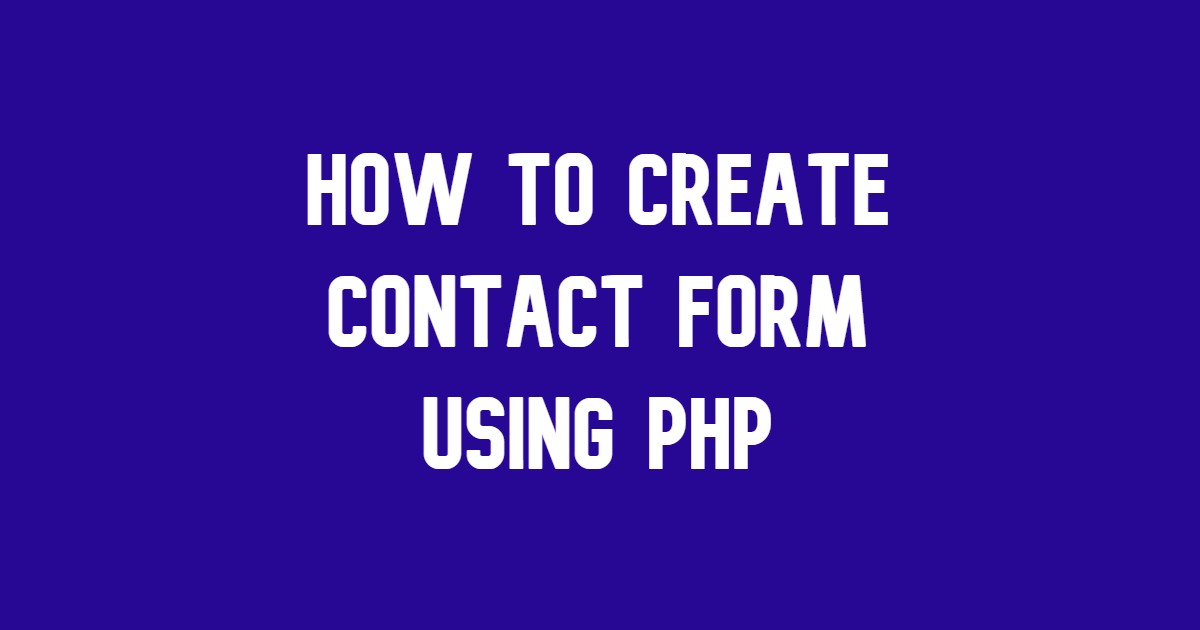A contact form is an essential feature for any website. It lets visitors reach out to you without exposing your email address to spam.If you’re wondering how to create a contact form using PHP, you’ve come to the right place.
In this guide, we’ll walk you through the entire process of building a simple and functional contact form using HTML and PHP. Whether you’re a beginner or brushing up on your skills, this tutorial has you covered.
What Is a Contact Form?
A contact form is a webpage feature that allows users to send messages directly to your email. It typically includes fields for:
- Name
- Email address
- Subject or reason for contact
- Message
By using PHP, you can process the submitted form data and send it to your email securely.
How to Create a Contact Form Using PHP
Let’s break the process into two parts: creating the front-end (HTML form) and processing the form with PHP.
Step 1: Create the HTML Form
Start by creating the form that users will see on your website. Here’s an example:
<!DOCTYPE html>
<html lang="en">
<head>
<meta charset="UTF-8">
<meta name="viewport" content="width=device-width, initial-scale=1.0">
<title>Contact Form</title>
</head>
<body>
<h2>Contact Us</h2>
<form action="contact.php" method="POST">
<label for="name">Name:</label><br>
<input type="text" id="name" name="name" required><br><br>
<label for="email">Email:</label><br>
<input type="email" id="email" name="email" required><br><br>
<label for="subject">Subject:</label><br>
<input type="text" id="subject" name="subject" required><br><br>
<label for="message">Message:</label><br>
<textarea id="message" name="message" rows="5" required></textarea><br><br>
<button type="submit">Send</button>
</form>
</body>
</html>
Save this file as index.html. This form sends data to a file called contact.php for processing.
Step 2: Process the Form with PHP
Now, let’s create the contact.php file to handle the form submission and send the message via email.
<?php
if ($_SERVER["REQUEST_METHOD"] == "POST") {
$name = htmlspecialchars($_POST['name']);
$email = htmlspecialchars($_POST['email']);
$subject = htmlspecialchars($_POST['subject']);
$message = htmlspecialchars($_POST['message']);
$to = "your-email@example.com"; // Replace with your email address
$headers = "From: $email\r\n";
$emailBody = "Name: $name\nEmail: $email\n\nMessage:\n$message";
if (mail($to, $subject, $emailBody, $headers)) {
echo "Thank you! Your message has been sent.";
} else {
echo "Oops! Something went wrong. Please try again.";
}
}
?>
Save this file as contact.php in the same directory as your HTML form.
Step 3: Test Your Contact Form
- Upload both files (
index.htmlandcontact.php) to your server. - Open the
index.htmlfile in your browser. - Fill out the form and click “Send.”
- Check your inbox for the email.
Tips for a Secure Contact Form
- Validate Input: Ensure that all input fields are validated to prevent malicious data. Use
htmlspecialchars()as shown above to sanitize data. - Use CAPTCHA: Add a CAPTCHA to protect your form from bots.
- Implement SMTP: For reliable email delivery, use an SMTP server instead of PHP’s
mail()function. Libraries like PHPMailer can simplify this process.
Conclusion Build Your Contact Form
Creating a contact form using PHP is a straightforward process that every website owner should know. With just a few lines of HTML and PHP, you can provide a professional way for visitors to connect with you.


